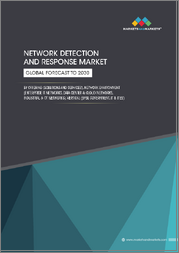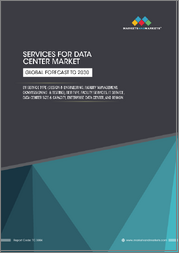
|
시장보고서
상품코드
1776229
아시아태평양의 데이터센터 백업용 HVO 시장 : 데이터센터 유형별, 원료 유형별, 국가별 - 분석과 예측(2025-2034년)Asia-Pacific HVO for Data Center Backup Market: Focus on Data Center Type, Feedstock Type, and Country - Analysis and Forecast, 2025-2034 |
||||||
아시아태평양의 데이터센터 백업용 HVO 시장 규모는 2024년에 11만 2,100달러에 달했습니다.
이 시장은 10.17%의 CAGR로 확대하며, 2034년에는 35만 9,500달러에 달할 것으로 예측됩니다. 수소화 분해 식물성 오일(HVO) 시장은 사업자들이 저탄소 디젤 대체 연료를 찾고 있으므로 아시아에서 빠르게 성장하고 있습니다. HVO는 수명주기 동안 CO2 배출량을 최대 90%까지 줄이는 동시에 디지털 전환으로 인해 증가하는 가동시간 요구에 대응할 수 있는 안정적인 백업 전력을 제공합니다. 연료의 안정성, 저장 수명, 발전기 성능은 HVO 생산의 발전과 현장 태양광발전, 축전지, 마이크로그리드 시스템과의 원활한 통합을 통해 개선되고 있습니다. 각국의 바이오연료법, 세제 혜택, 탈탄소화 요건에 힘입어 Neste, TotalEnergies, Repsol, Shell과 같은 국제적인 공급업체들이 싱가포르, 일본, 호주, 인도에서 사업을 확장하고 있습니다. APAC의 데이터센터 사업자들은 규제 압력이 증가하고 기업의 지속가능성 기준이 강화됨에 따라 친환경 디지털 인프라로의 전환을 추진하기 위해 HVO를 통해 저렴하고 확장 가능하며 배출량에 맞는 백업 솔루션을 찾고 있습니다.
| 주요 시장 통계 | |
|---|---|
| 예측 기간 | 2025-2034년 |
| 2025년의 평가 | 15만 400달러 |
| 2034년 예측 | 35만 9,500달러 |
| CAGR | 10.17% |
시장 소개
아시아태평양이 탈탄소 디지털 인프라를 지향하는 가운데, 수소화 분해 식물성 오일(HVO) 시장은 탈탄소 전력 시스템의 백업 연료로서 그 중요성이 커지고 있습니다. HVO는 거의 동일한 성능 특성을 가지고 있으면서도 전과정 온실가스 배출량을 최대 90%까지 줄일 수 있으므로 점점 더 엄격해지는 배출량 목표와 증가하는 송전망 불안정성 위험에 대응하기 위해 발전소 운영자들이 기존 디젤 발전기를 대체할 수 있는 재생 연료로 떠오르고 있습니다. 떠오르고 있습니다. 원료 처리의 신속한 개발과 하이브리드 에너지 시스템(스마트 마이크로그리드, 현장 태양열, 축전지 등)에 대한 원활한 통합을 통해 연료의 안정성이 향상되고, 저장 수명이 연장되며, 유지보수 일정이 단축되고 있습니다.
Neste, TotalEnergies, Repsol, Shell은 싱가포르, 일본, 호주, 인도 등 APAC의 주요 거점에서 HVO 전문 생산 능력을 확대하고 있습니다. 바이오연료 혼합 의무화, 재생 연료에 대한 세제 혜택, 프로젝트의 경제성을 높이는 우대 융자제도 등이 투자의 기반이 되고 있습니다. 한편, 하이퍼스케일 데이터센터와 엔터테인먼트 데이터센터의 오너들은 탄력성의 장점과 탄소배출권의 전망을 검증하기 위해 HVO를 파일럿 시스템 및 상업용 백업 시스템에 점차적으로 통합하고 있습니다.
아시아태평양의 데이터센터 백업용 HVO 시장은 기업의 지속가능성에 대한 약속, 규제 요건, 에너지 및 보안에 대한 우려의 변화로 인해 급성장할 것으로 예측됩니다. 이러한 변화는 긴급한 지속적 수요를 충족시킬 뿐만 아니라, 아시아태평양 전체에서 보다 강력하고 친환경적인 디지털 경제를 구축한다는 장기적인 목표에 부합합니다.
시장 세분화
부문 1: 데이터센터 유형별
- 코로케이션과 리테일
- 하이퍼스케일 데이터센터
- 기타
부문 2: 데이터센터 - 유형별
- 식용 식물성 오일
- 조잡한 팜유
- 사용한 식용유
- 톨유
- 동물성 유지
- 기타
- 비식용 식물성 오일
- 팜유 공장 폐액
- 기타
부문 3: 지역별로
- 아시아태평양
아시아태평양의 데이터센터 백업용 HVO 시장 동향 및 추진 요인 - 과제
동향
- 저탄소 백업 솔루션으로의 전환: 아시아태평양의 주요 데이터센터 사업자들은 기업의 넷제로 목표에 맞추어 기존 디젤 발전기를 대체할 수 있는 친환경 대안으로 수소화 분해 식물성 오일(HVO)을 시범적으로 도입하고 있습니다.
- 하이브리드 전원 아키텍처와의 통합: HVO 시스템은 전체 백업 용량을 최적화하고 발전기 가동 시간을 단축하기 위해 배터리 에너지 저장 및 현장 재생에너지와 결합하는 경우가 증가하고 있습니다.
- 전략적 파트너십 및 파일럿 프로젝트: 기술 프로바이더, 연료 공급업체, 하이퍼스케일 데이터센터 운영자들은 특히 싱가포르, 일본, 호주에서 성능, 배출량 및 비용 측정 기준을 검증하기 위한 파일럿 도입에 협력하고 있습니다. 협력하고 있습니다.
- 정부 및 규제 지원: 아시아태평양의 일부 정부(예: 일본의 녹색 성장 전략, 인도의 국가 바이오연료 정책)는 바이오연료를 이용한 백업 발전에 대한 인센티브를 제공하고 승인을 간소화했습니다.
성장 촉진요인
- 배출 감축 의무: 온실가스 및 미립자 물질 배출에 대한 지역별 목표가 강화됨에 따라 데이터센터는 규제에 부합하는 백업 연료를 찾는 경향이 있습니다.
- 기업의 지속가능성에 대한 약속: 세계 주요 클라우드 프로바이더들은 2030년까지 24시간 365일 24시간 연중무휴 운영을 약속하고 있으며, HVO는 보다 깨끗한 백업 전원에 대한 즉각적인 드롭인 루트를 제공합니다.
- 송전망 신뢰성에 대한 우려: 신흥 시장(동남아시아, 인도 등)에서는 잦은 송전망 정전 및 전압 변동으로 인해 비즈니스 연속성을 유지하는 견고한 장시간 백업 솔루션에 대한 요구가 증가하고 있습니다.
- 수명주기 비용 우위: HVO는 디젤보다 약간 비싸지만,(청정 연소 특성으로 인한) 낮은 유지보수 필요성과 잠재적인 탄소배출권으로 인해 총소유비용을 상쇄할 수 있습니다.
과제
- 원료 공급의 제약: 식용 작물이나 토지 이용에 영향을 주지 않으면서 HVO 생산을 지속적으로 확대하는 것이 병목현상입니다. 다른 산업과의 원자재 경쟁으로 인해 가격이 상승할 수 있습니다.
- 연료 인프라 업그레이드: HVO를 대규모로 안전하게 사용하기 위해서는 기존 디젤 저장-취급 시스템의 개보수(물질 적합성 검사, 여과 강화 등)가 필요할 수 있습니다.
- 가격 변동 및 프리미엄: HVO는 현재 초저유황디젤 대비 10-30%의 프리미엄으로 거래되고 있으며, 비용에 민감한 사업자에게는 예산 승인이 더 복잡해집니다.
- 규제 및 인증 문제: 바이오연료 혼합 및 발전기 인증에 대한 아시아태평양의 통일된 표준이 없기 때문에 여러 국가에서의 보급이 지연될 수 있습니다.
제품/혁신 전략: 제품 유형은 지역별로 사용 가능한 제품의 유형을 이해하는 데 도움이 됩니다. 또한 아시아태평양의 데이터센터 백업용 HVO 시장을 용도별, 제품별로 상세하게 파악할 수 있습니다.
성장/마케팅 전략: 아시아태평양 데이터센터 백업용 HVO 시장은 사업 확장, 파트너쉽, 협업, 합작투자 등 시장에서 사업을 전개하고 있는 주요 기업에 의해 주요 개발이 이루어지고 있습니다. 아시아태평양의 데이터센터 및 백업용 HVO 시장에서의 입지를 강화하기 위해 각 업체들은 시너지 효과를 노리는 전략을 구사하고 있습니다.
아시아태평양의 데이터센터 백업용 HVO 시장에 대해 조사했으며, 시장의 개요와 데이터센터 유형별, 원료 유형별, 국가별 동향 및 시장에 참여하는 기업의 개요 등을 제공하고 있습니다.
목차
개요
제1장 시장
- 동향 : 현황과 향후에 대한 영향 평가
- 동향 : 개요
- 재생 연료로의 이동
- 지속가능 및 재생연료에 대한 산업계의 수요 증가
- HVO 공급망의 개요
- 밸류체인 분석
- 가격 예측
- 수소화 처리 식물성 오일과 기타 지속가능 연료와의 비교
- 수소화 식물성 오일의 향후 원료
- 생산능력 분석
- 수소화 처리 식물성 오일의 수급 분석
- 연구개발 리뷰
- 특허 출원 동향(기업별)
- 규제 상황과 업계 구상
- 이해관계자 분석
- 시장 역학 개요
- 시장 성장 촉진요인
- 시장 성장 억제요인
- 시장 기회
- 데이터센터 전원 백업 시장 개요
- 디젤 발전기의 대체품
- 시장 도입 시나리오
- 새로운 발전기의 도입
- 기존 시스템의 변환
- 백업에 HVO를 채택하는 데이터센터
- STT GDC Pte Ltd
제2장 지역
- 지역의 요약
- 아시아태평양
- 지역 개요
- 시장 성장 촉진요인
- 시장 성장 억제요인
- 용도
- 제품
- 중국
- 일본
- 싱가포르
- 한국
- 기타
제3장 시장 - 경쟁 벤치마킹과 기업 개요
- 향후 전망
- 지역적 평가
제4장 조사 방법
KSA 25.08.01This report can be delivered in 2 working days.
Introduction to Asia-Pacific HVO for Data Center Backup Market
The Asia-Pacific HVO for data center backup market was valued at $112.1 thousand in 2024 and is projected to grow at a CAGR of 10.17%, reaching $359.5 thousand by 2034. The market for hydrotreated vegetable oil (HVO) as a data-center backup fuel is expanding quickly in Asia as operators look for drop-in, low-carbon diesel substitutes. HVO reduces lifecycle CO2 emissions by up to 90% while providing dependable backup power in the face of increasing uptime needs brought on by digital transformation. Fuel stability, storage life, and genset performance are being improved by advances in HVO production and its smooth integration with on-site solar, battery storage, and microgrid systems. With the help of national biofuel laws, tax breaks, and decarbonisation requirements, international providers like Neste, TotalEnergies, Repsol, and Shell are expanding their operations in Singapore, Japan, Australia, and India. APAC data centre operators are increasingly turning to HVO for an affordable, scalable, and emissions-aligned backup solution as regulatory pressure increases and corporate sustainability standards tighten, driving the region's transition to a greener digital infrastructure.
| KEY MARKET STATISTICS | |
|---|---|
| Forecast Period | 2025 - 2034 |
| 2025 Evaluation | $150.4 Thousand |
| 2034 Forecast | $359.5 Thousand |
| CAGR | 10.17% |
Market Introduction
The market for hydrotreated vegetable oil (HVO) as a backup fuel for data centre power systems is growing in importance as the Asia-Pacific (APAC) region strives towards decarbonised digital infrastructure. With nearly identical performance characteristics and up to 90% reductions in lifecycle greenhouse gas emissions, HVO has emerged as a drop-in renewable alternative to traditional diesel generators as data centre operators struggle with increasingly strict emissions targets and the growing risks of grid instability. Quick developments in feedstock processing, together with their smooth incorporation into hybrid energy systems (such as smart microgrids, on-site solar, and battery storage), are improving fuel stability, prolonging storage life, and lowering maintenance schedules.
Neste, TotalEnergies, Repsol, and Shell are expanding specialised HVO production capacity in key APAC hubs like Singapore, Japan, Australia, and India. Mandates for the mixing of biofuels, tax breaks for renewable fuels, and preferential financing programs that boost project economics serve as the foundation for their investments. Meanwhile, in order to validate resilience advantages and carbon-credit prospects, hyperscale and enterprise data-center owners are progressively integrating HVO into pilot and commercial backup systems.
The APAC HVO for data-center backup market is expected to grow rapidly because to the combination of corporate sustainability pledges, regulatory requirements, and changing energy-security concerns. In addition to meeting urgent continuity needs, this change supports longer-term goals of building a more resilient and environmentally friendly digital economy throughout the Asia-Pacific area.
Market Segmentation
Segmentation 1: by Data Center Type
- Colocation and Retail
- Hyperscale Data Center
- Others
Segmentation 2: by Data Center Type
- Edible Vegetable Oils
- Crude Palm Oil
- Used Cooking Oil
- Tall Oil
- Animal Fats
- Others
- Non-Edible Vegetable Oil
- Sludge Palm Oil Mill Effluent
- Others
Segmentation 3: by Region
- Asia-Pacific
APAC HVO for Data Center Backup Market Trends, Drivers and Challenges
Trends
- Shift to Low-Carbon Backup Solutions: Major data center operators in APAC are trialing and adopting hydrotreated vegetable oil (HVO) as a cleaner alternative to conventional diesel generators, aligning with corporate net-zero targets.
- Integration with Hybrid Power Architectures: HVO systems are increasingly being paired with battery energy storage and on-site renewables to optimize overall backup capacity and reduce genset runtime.
- Strategic Partnerships & Pilot Projects: Technology providers, fuel suppliers, and hyperscale data center operators are collaborating on pilot deployments-particularly in Singapore, Japan, and Australia-to validate performance, emissions, and cost metrics.
- Government & Regulatory Encouragement: Several APAC governments (e.g., Japan's Green Growth Strategy, India's National Biofuel Policy) are offering incentives or streamlined approvals for biofuel-powered backup generation.
Drivers
- Emissions Reduction Mandates: Tightening regional targets for greenhouse gas and particulate emissions are pushing data centers to seek compliant backup fuels.
- Corporate Sustainability Commitments: With major global cloud providers pledging 24/7 carbon-free operations by 2030, HVO offers an immediate drop-in route to cleaner backup power.
- Grid Reliability Concerns: Frequent grid outages or voltage fluctuations in developing APAC markets (e.g., Southeast Asia, India) drive demand for robust, long-duration backup solutions that maintain business continuity.
- Lifecycle Cost Advantages: Although HVO carries a slight price premium over diesel, lower maintenance requirements (due to its cleaner combustion profile) and potential carbon credits can offset total cost of ownership.
Challenges
- Feedstock Supply Constraints: Scaling HVO production sustainably-without impacting food crops or land use-remains a bottleneck. Feedstock competition with other industries can drive up prices.
- Fuel Infrastructure Upgrades: Existing diesel storage and handling systems may require modifications (e.g., material compatibility checks, filtration enhancements) before HVO can be used safely at scale.
- Price Volatility & Premium: HVO currently trades at a 10-30% premium over ultra-low-sulfur diesel, making budget approvals more complex for cost-focused operators.
- Regulatory & Certification Hurdles: Lack of unified APAC standards for biofuel blending and generator certification can slow roll-out across multiple countries.
How can this report add value to an organization?
Product/Innovation Strategy: The product segment helps the reader understand the different types of products available regionally. Moreover, the study provides the reader with a detailed understanding of the APAC HVO for data center backup market based on application and product.
Growth/Marketing Strategy: The APAC HVO for data center backup market has seen major development by key players operating in the market, such as business expansion, partnership, collaboration, and joint venture. The favored strategy for the companies has been synergistic activities to strengthen their position in the APACHVO for data center backup market.
Competitive Strategy: Key players in the APAC HVO for data center backup market have been analyzed and profiled in the study of HVO for data center backup products. Moreover, a detailed competitive benchmarking of the players operating in the APACHVO for data center backup market has been done to help the reader understand how players stack against each other, presenting a clear market landscape. Additionally, comprehensive competitive strategies such as partnerships, agreements, and collaborations will aid the reader in understanding the untapped revenue pockets in the market.
Table of Contents
Executive Summary
Scope and Definition
1 Markets
- 1.1 Trends: Current and Future Impact Assessment
- 1.1.1 Trend: Overview
- 1.1.2 Transition to Renewable Fuels
- 1.1.3 Increasing Demand for Sustainable and Renewable Fuel by Industries
- 1.2 HVO Supply Chain Overview
- 1.2.1 Value Chain Analysis
- 1.2.2 Pricing Forecast
- 1.2.3 Comparison between Hydrotreated Vegetable Oil and Other Sustainable Fuels
- 1.2.4 Future Raw Materials for Hydrotreated Vegetable Oil
- 1.2.5 Production Capacity Analysis
- 1.2.6 Supply and Demand Analysis for Hydrotreated Vegetable Oil
- 1.3 Research and Development Review
- 1.3.1 Patent Filing Trend (by Company)
- 1.4 Regulatory Landscape and Industry Initiatives
- 1.4.1 Regulations and Policies
- 1.4.2 Climate Neutral Data Center Pact
- 1.4.3 Others
- 1.5 Stakeholder Analysis
- 1.5.1 End User and Buying Criteria
- 1.6 Market Dynamics Overview
- 1.6.1 Market Drivers
- 1.6.1.1 Carbon Emission Reduction Goals
- 1.6.1.2 Growth of Power Demand by Data Centers
- 1.6.2 Market Restraints
- 1.6.2.1 Infrastructure and Compatibility Costs
- 1.6.2.2 Supply Chain Limitations
- 1.6.3 Market Opportunities
- 1.6.3.1 Regulatory Support and Incentives
- 1.6.3.2 Partnerships and Collaborations with Biofuel Producers
- 1.6.1 Market Drivers
- 1.7 Data Center Power Backup Market Overview
- 1.7.1 Alternatives to Disel Gensets
- 1.8 Market Adoption Scenario
- 1.8.1 Adoption of New Generators
- 1.8.2 Conversion of Existing Systems
- 1.9 Data Centers Adopting HVO for Backup
- 1.9.1 STT GDC Pte Ltd
- 1.9.1.1 Locations
- 1.9.1.2 Long Term Plan
- 1.9.1 STT GDC Pte Ltd
2 Regions
- 2.1 Regional Summary
- 2.2 Asia-Pacific
- 2.2.1 Regional Overview
- 2.2.2 Driving Factors for Market Growth
- 2.2.3 Factors Challenging the Market
- 2.2.4 Application
- 2.2.5 Product
- 2.2.6 China
- 2.2.7 Japan
- 2.2.8 Singapore
- 2.2.9 South Korea
- 2.2.10 Rest-of-Asia-Pacific
3 Markets - Competitive Benchmarking & Company Profiles
- 3.1 Next Frontiers
- 3.2 Geographic Assessment
4 Research Methodology
- 4.1 Data Sources
- 4.1.1 Primary Data Sources
- 4.1.2 Secondary Data Sources
- 4.1.3 Data Triangulation
- 4.2 Market Estimation and Forecast



















